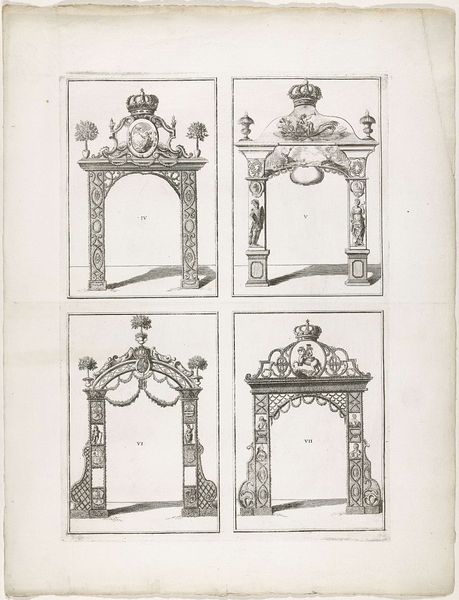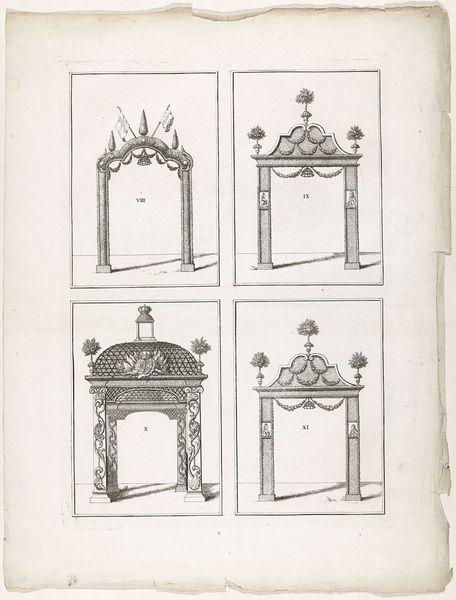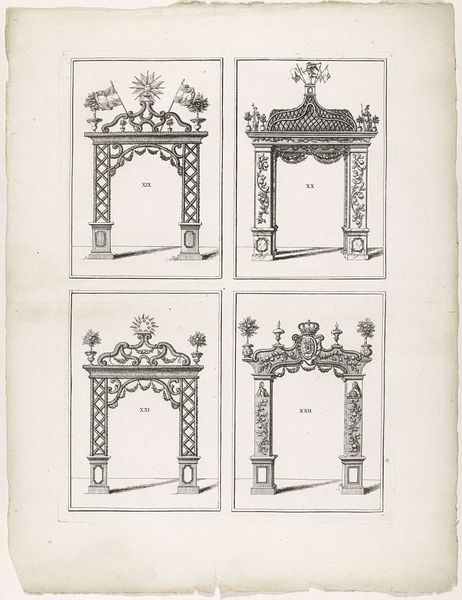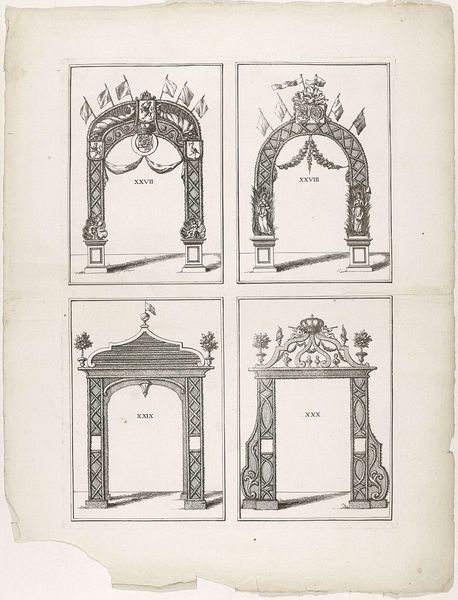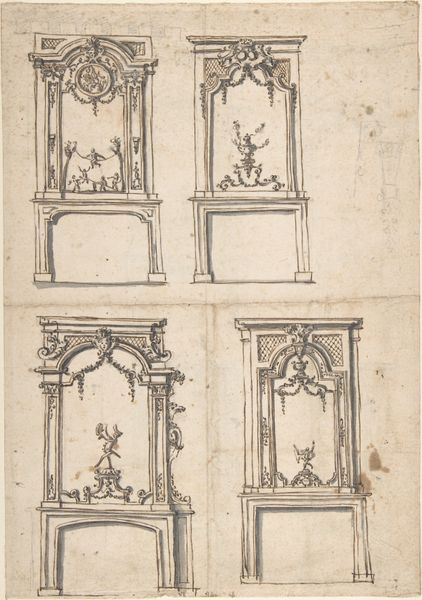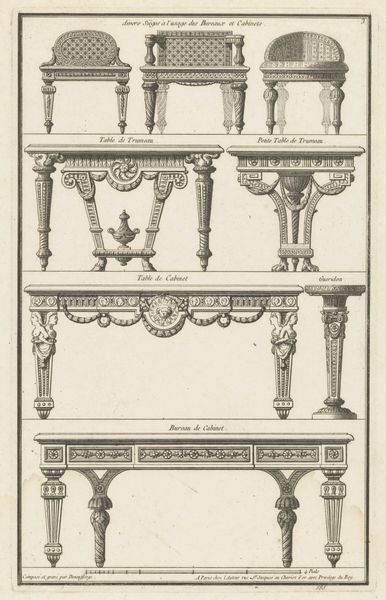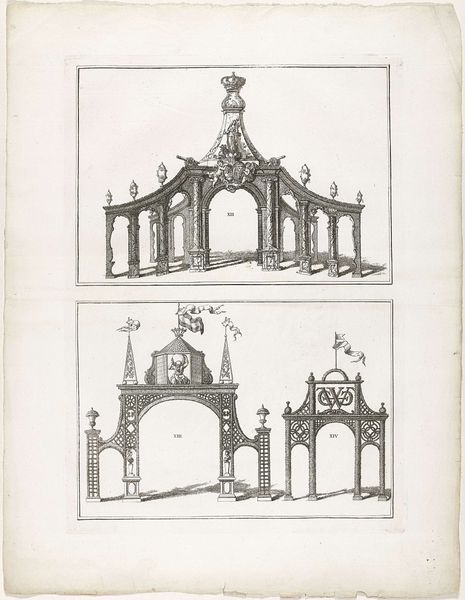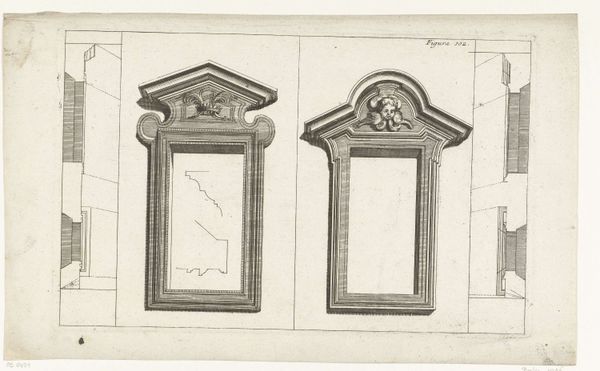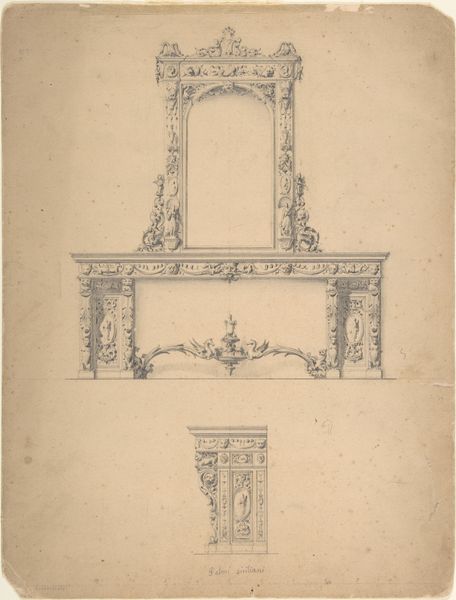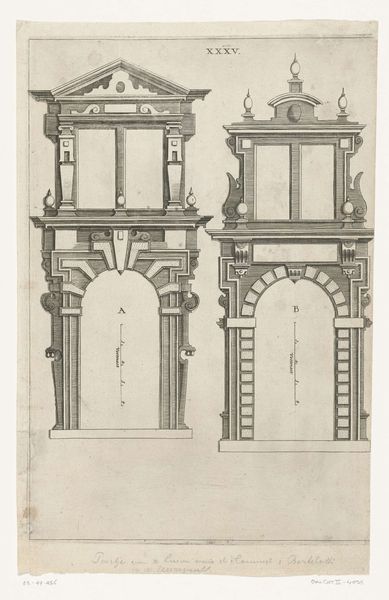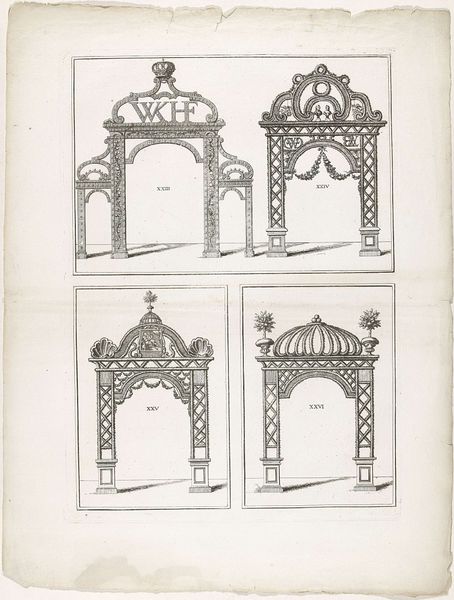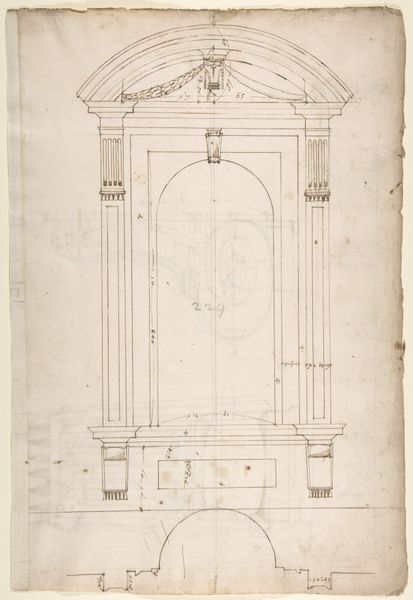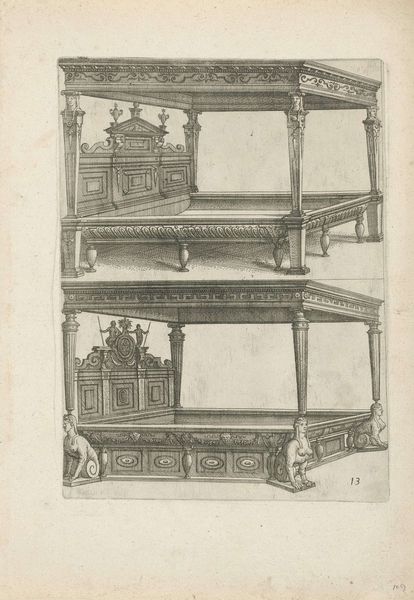
Dimensions: height 545 mm, width 420 mm
Copyright: Rijks Museum: Open Domain
Curator: These preparatory drawings by Albertus Frese, created around 1766, showcase a suite of triumphal arches planned for The Hague. The title, "Erepoorten XXXII-XXXVII te Den Haag, 1747," suggests they commemorate events from that earlier year. They're done with ink and engraving, capturing the aspirations of Baroque design. What springs to mind when you see this? Editor: Frivolity, perhaps. My immediate impression is, “Oh, my, such excess.” I'm also drawn to how delicately they are rendered. It reminds me of intricate pastry decorations. Curator: I think that response hints at something important. While seemingly frivolous, these arches symbolize power, status, and the aspirations of a particular moment. They reflect a society deeply invested in visible displays of authority, both royal and civic. They would have served as monumental stages for political and social theater, a practice integral to solidifying dominance. Editor: Absolutely. They're more than just ornamentation. They are pronouncements, or rather demands for recognition, constructed in the built environment. I notice also that, while all the arches have a somewhat similar structure, they each carry distinct symbolic markers at the top. A crown here, geometric designs there...what are we to make of this variety? Curator: Indeed. They appear to blend architectural ambition with symbolic messaging. For instance, some contain what seem to be references to the ruling house or symbols alluding to classical ideals. The variation likely reflects differing intended audiences or specific virtues the commissioners wanted to highlight. Considering theories around spectatorship and how architecture participates in societal rhetoric can expand how we perceive these "gates." Editor: Do you imagine these structures as purely performative? Or might these gates, beyond acting as instruments of political manipulation, fulfill some other, unexpected role in people’s lives? A place for stolen kisses or simply providing shade during market days? Curator: That’s an excellent question! They absolutely serve as vital arteries within the social infrastructure of urban life, even accidentally and spontaneously becoming focal points in how the population orients itself spatially and emotionally toward shared memories and the routines of their everyday. Editor: Okay, okay. You've successfully complicated my initial dismissal. Next time I encounter overt grandiosity, I’ll look harder. Curator: Precisely. Nuance allows us to acknowledge not just the visible intention but the less immediately obvious power dynamics within a structure.
Comments
No comments
Be the first to comment and join the conversation on the ultimate creative platform.
